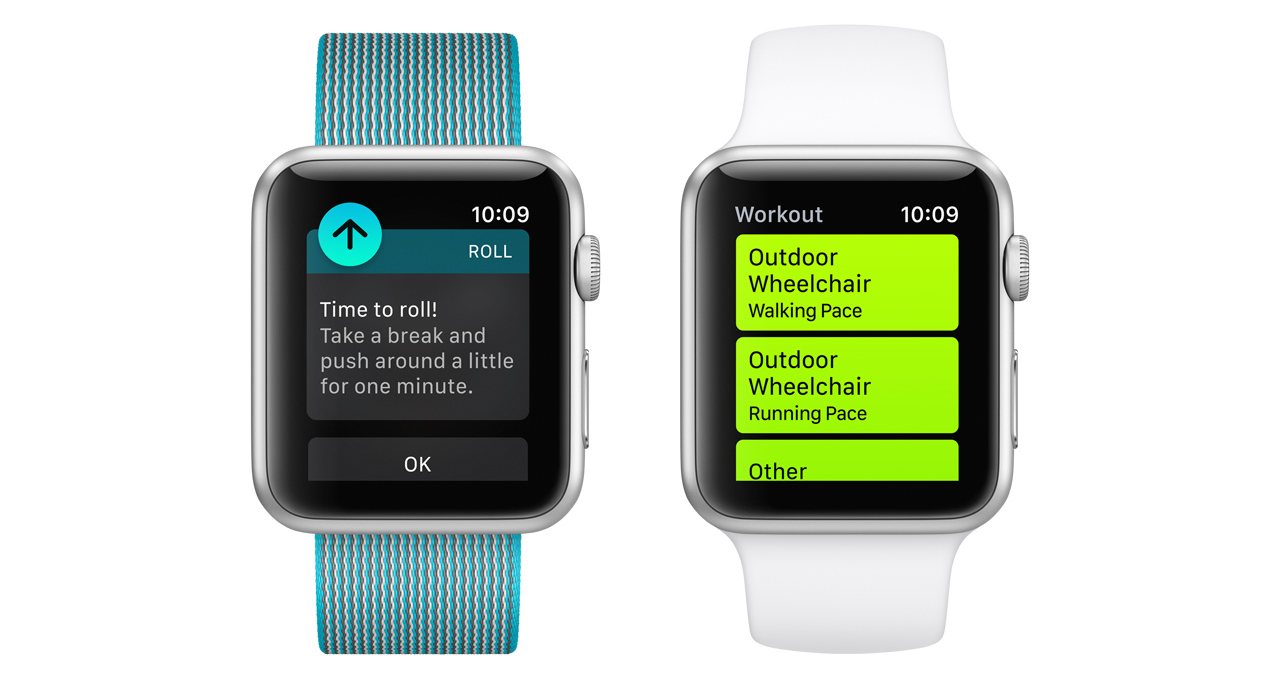
Around 650 million people around the world have some disabilities, and
10% of that population uses wheelchairs. Recently, Apple announced that Apple Watch’s next update will enable wheelchair users to use it for keeping track of calories burned as well as their fitness goals. What’s remarkable is that in order to come up with this feature – tracking pushes instead of steps (for able bodied people), Apple did its own study with wheelchair users and collected a lot of data.
For tracking steps, the Apple Watch looks at someone’s arm movement as well as their feet hitting the ground. Wheelchair users have a different arm movement when they push and also don’t hit their feet to the ground, so the algorithm used for tracking steps doesn’t work for them. With the help of Lakeshore Foundation and the Challenged Athletes Foundation, two organizations dedicated towards promoting fitness among people with disabilities, Apple did some tests with wheelchair users. Each person used their own wheelchair (as compared to wheelchairs provided by the study team which the subjects were not used to), which was fitted with various sensors that collected very precise data on their movement. Calories burned while pushing a wheelchair was determined by an oxygen mask they wore during the study. At the end of the study, Apple collected 3,500 hours worth of data from 700 wheelchair users from all walks of life – fitness athletes to those who can barely move, and in various environments like trails, asphalt, carpet (as compared to just one surface in a lab setting). They used this data to understand how wheelchair users move their body and burn calories. This data is being used to enable wheelchair users to track their fitness in the upcoming watchOS release.
In the study, Apple found that wheelchair users push themselves in three ways:
1. Semicircle: Pushing from 10 o’ clock to 3 o’clock position.
2. Arc push: This is when someone has to go up an incline – short, powerful pushes with a quick jerk to return position in order to prevent rolling back.
3. Semi-loop-over: This is typically done while playing sports, like wheelchair racing, where the person is really leaning in to push.
Apple has also introduced the “time to roll” feature in its interface too. For able bodied people, it is “time to stand”, but the next update will encourage wheelchair users to move around for a minute every hour, and not stay in one position for very long.
Apple’s introduction of this feature not only encourages people to keep track of their fitness but also sends a strong message to the entire community – Not only are exercising and good health important, but there’s a tool available now that will encourage them to live and sustain a healthy lifestyle.
[Thanks for sharing, Erin!]
Related


I also blogged about this watch http://negararvanaghi.blogspot.com/2016/07/fitbit-useful-or-not.html